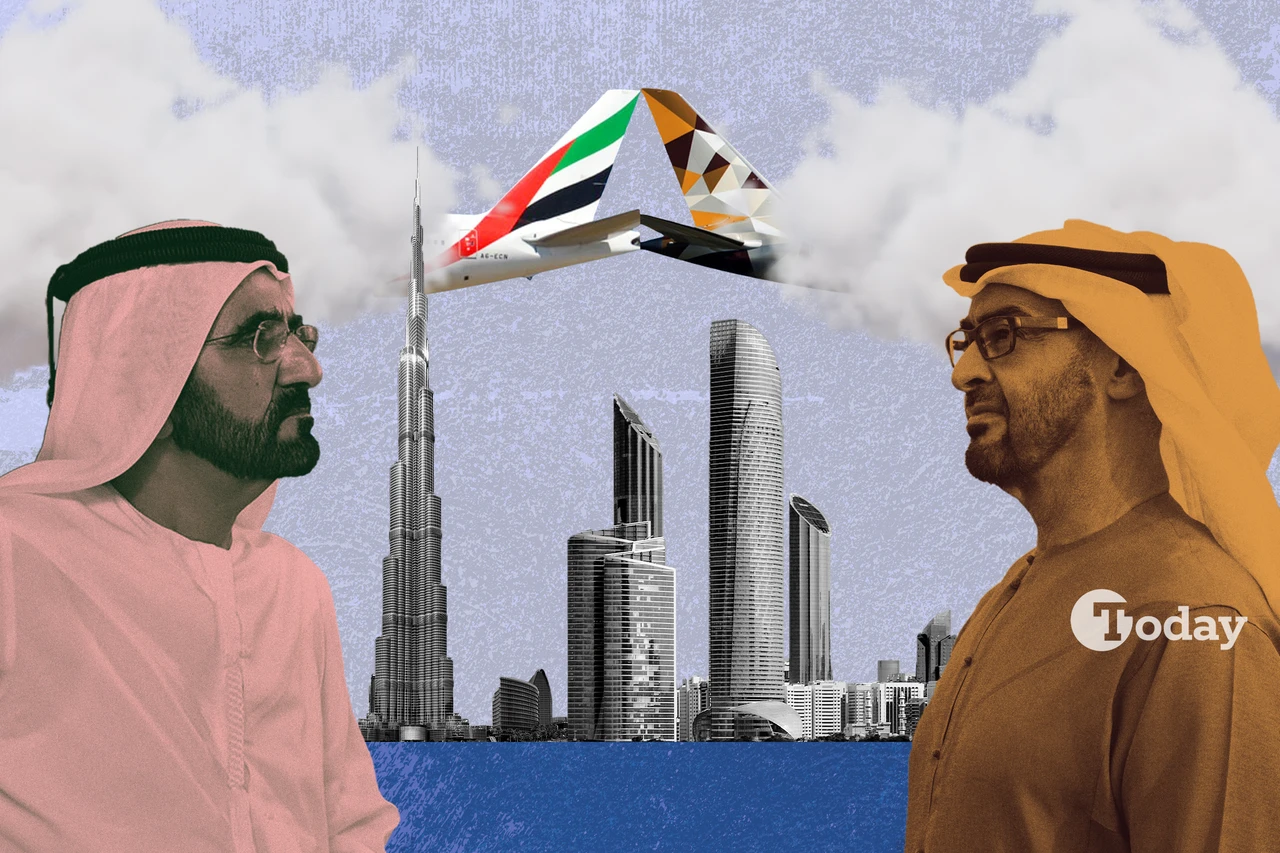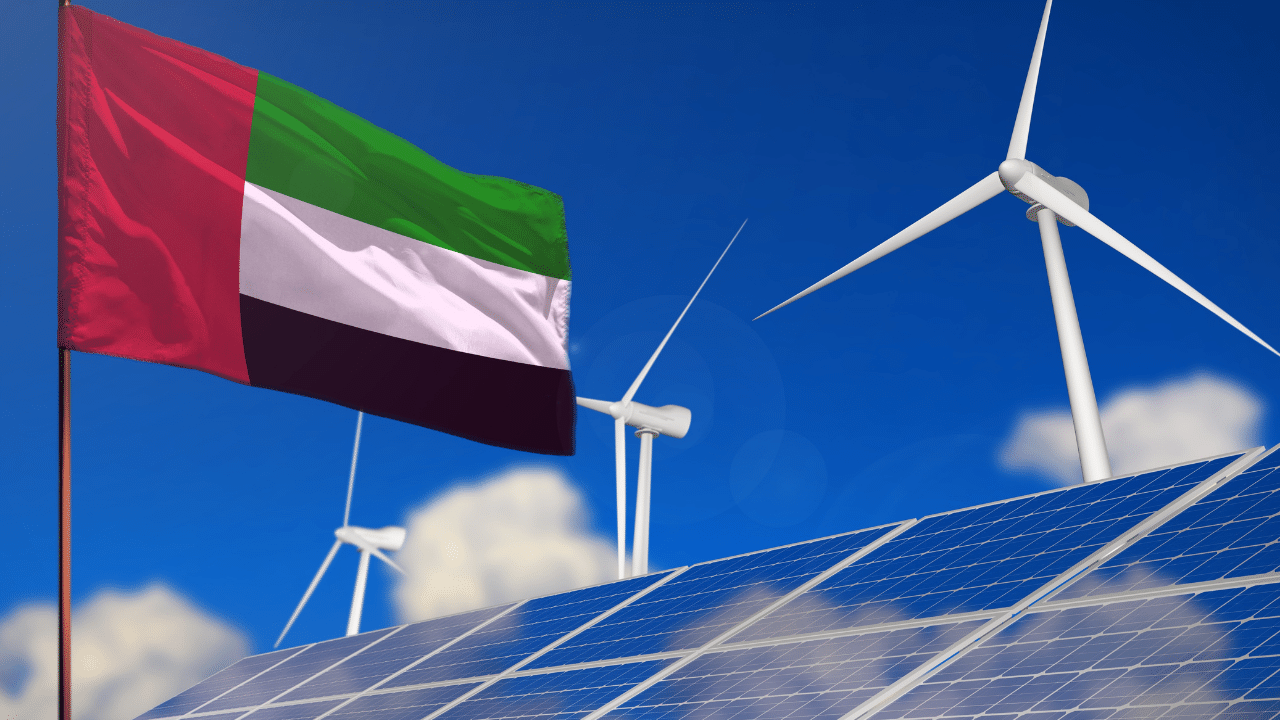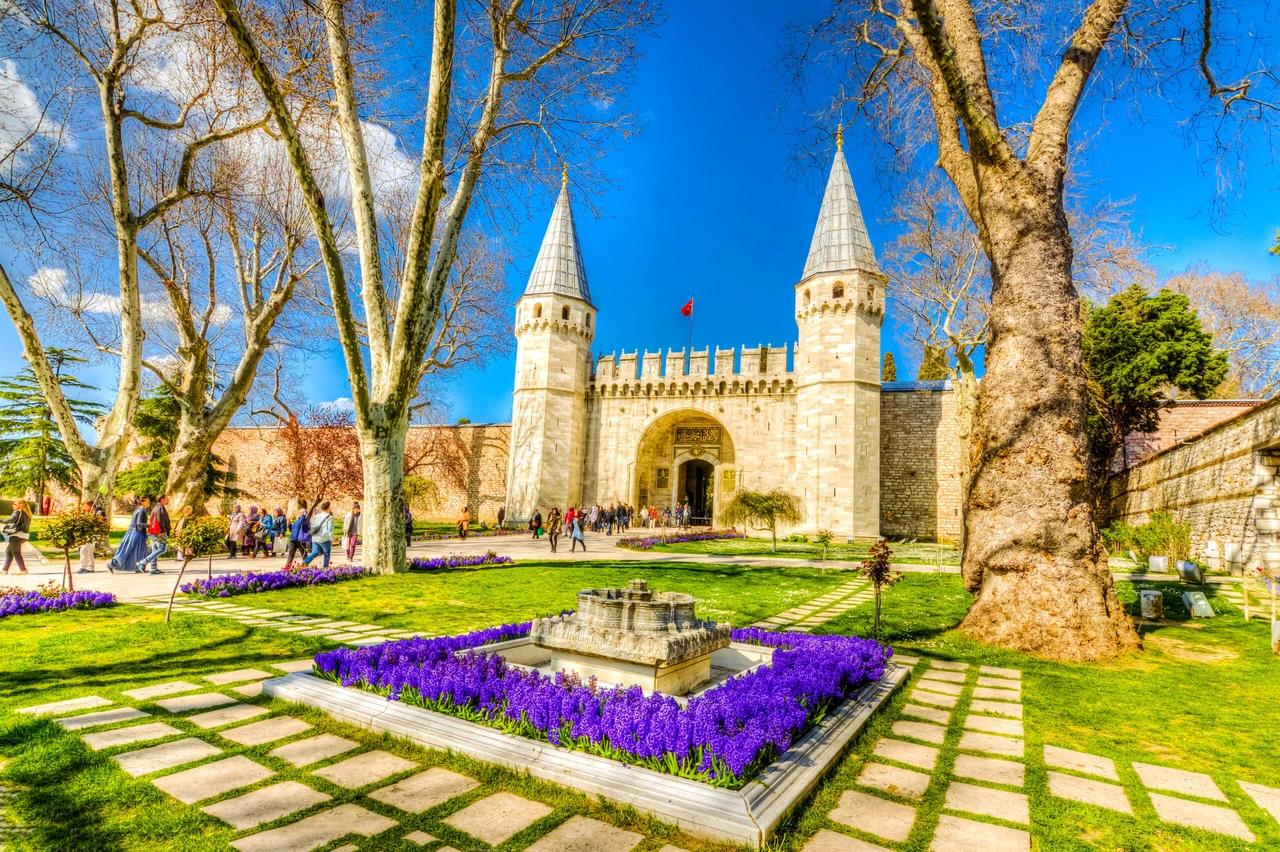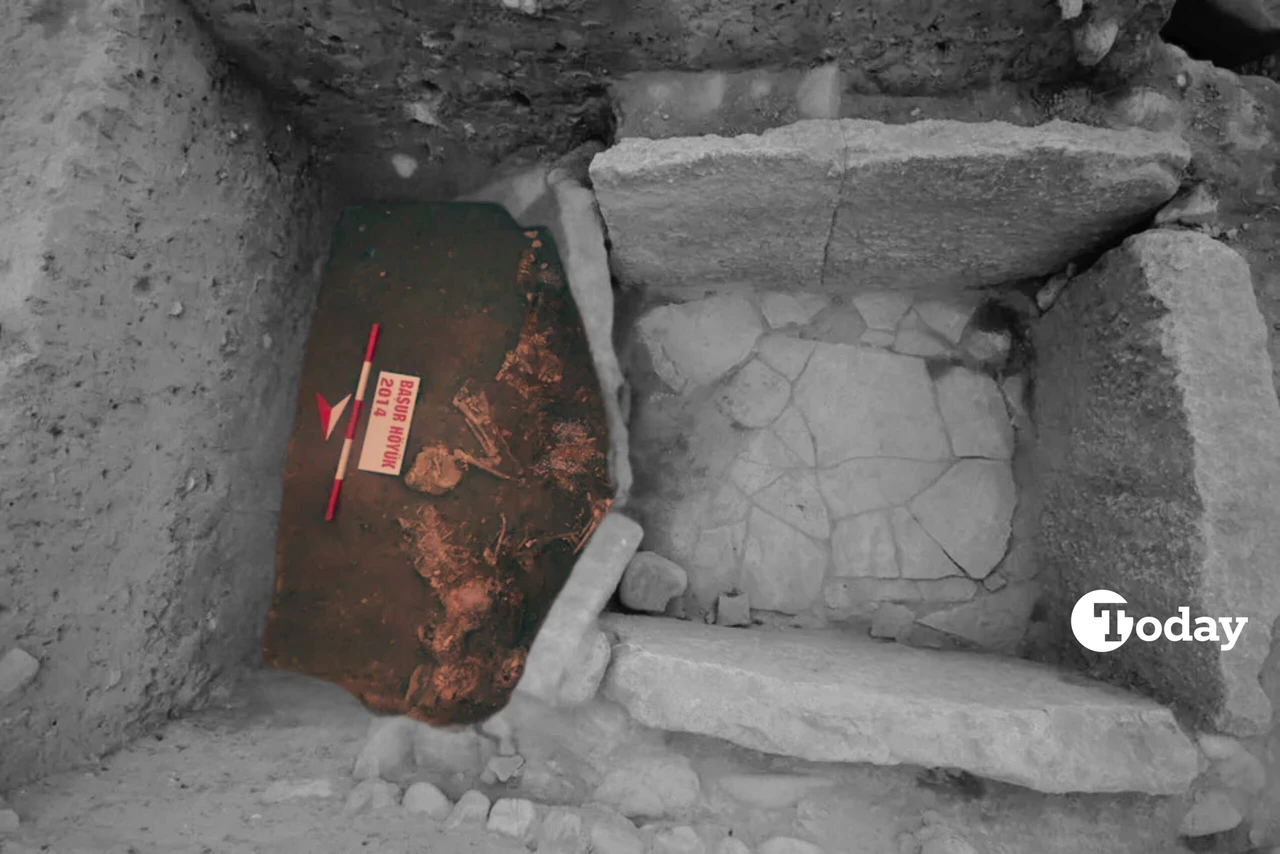Between power and prestige: The Abu Dhabi and Dubai story
 A collage of the UAE President Mohamed bin Zayed Al Nahyan and Dubai Ruler Sheikh Mohammed bin Rashid Al Maktoum, set against their cities' iconic skylines. (Mehmet Akbas/Türkiye Today)
A collage of the UAE President Mohamed bin Zayed Al Nahyan and Dubai Ruler Sheikh Mohammed bin Rashid Al Maktoum, set against their cities' iconic skylines. (Mehmet Akbas/Türkiye Today)
As those who have lived in the UAE may know, phone numbers hint at each emirate’s identity: Like every city, Dubai numbers start with +972 followed by 04, while in the capital Abu Dhabi it is followed by 02 and 01 is left unassigned. The reason 01 is left empty is that when the telephone network was set up in 1971, just before the country declared its independence, this priority number was reserved for the proposed capital Al Karama. Between Ras Al Khaimah, which gets 07, and Fujairah, which starts with 09, 8 was to be left to Qatar, before the peninsula decided to chart its own destiny separately.
When drafting the UAE constitution, the governing body included Article 9, stating: “The Capital of the Union shall be established in an area allotted to the Union by the Emirates of Abu Dhabi and Dubai on the borders between them and it shall be given the name Al Karama…”
Sheikh Zayed, then ruler of Abu Dhabi and President of the UAE, envisioned using newfound oil wealth to transform this desert region into a thick forest, beginning to fill the area with trees. This ‘dream’ quickly grew closer to reality than the earlier plan. With the support of others who saw a federal government restricting itself to regulating security and foreign affairs, in 1996 the UAE Supreme Council amended the constitution, removing all provisions of Article 9 and replacing it with a new article stating that Abu Dhabi would be the Capital of the UAE.
The Branding Race: Emirates of Influence
Dubai has long worked out its image as a global luxury tourism destination, drawing millions to iconic spots like the Burj Khalifa, Palm Jumeirah, and Dubai Mall. With its focus on high-end shopping, luxury events, and architectural marvels, it has built a global brand, all the sorrows of it remained ignored. While some view this success as a boost to the UAE’s economic diversity that also benefits Abu Dhabi, Dubai remains determined to keep its status as the nation’s primary tourism and trade hub.
Abu Dhabi, however, is investing significantly with another type of image to get its share from Dubai’s tourism dominance. Landmarks like the Louvre Abu Dhabi, the Sheikh Zayed Mosque, the Yas Marina Circuit for Formula 1, and the Abrahamic Family House put an emphasis on the capital’s aim to get on minds when the talk is luxury and cultural tourism. By hosting prestigious events and launching visionary projects, Abu Dhabi aims to position itself as a refined alternative to Dubai’s entertainment-centric appeal.
Some suggest that the rulers of the land are aware that this competition benefits both, encouraging the total growth in result. The underlying contest, however, is symbolized in the name of one of the UAE’s most symbolic landmarks. The world’s tallest building, now known as the Burj Khalifa, was originally called Burj Dubai. The renaming came after financial assistance from Khalifa during a turbulent period for the emirate of Dubai, ensuring that Khalifa’s name—and influence—would stand at the very top of the highest.

Dubai and Abu Dhabi: Plays And Payoffs
The contrasting –or complementary investment strategies can also be used to understand the relationship between the two largest emirates, where one is larger than the other. Dubai, while tax-exempt from Abu Dhabi, has long received generous development support, as the federal government—funded largely by oil wealth—handles infrastructure and the guns of diplomacy, i.e the very necessary tribute of superpowers.
Dubai’s economy, largely built on free zones and simplified trade policies, has attracted a steady stream of international businesses, with most of its revenue sources unrelated to natural resources. Initiatives like the Dubai International Financial Center (DIFC) and Dubai Internet City are only a few of the indicators of its ambitions in finance and technology. By creating a business-friendly climate and prioritizing tech and innovation, the tax haven has launched several global brands on its relatively small piece of land.
Meanwhile, Abu Dhabi leverages its substantial oil wealth to shift towards sustainable sectors, such as renewable energy and advanced technology. Projects like Masdar City and Mubadala investments highlight the federal capital’s commitment to sustainability and economic diversification, aiming to establish a pivotal role in the future of energy, technology, and beyond. Both emirates occasionally invest in overlapping fields—media and education are prime examples.
Prestige Wars
As Gulf powerhouses continue learning from one another and investing across sectors, there is a serious competition between the international brands of the region. Qatar becomes the one who set the tone early, tapping BBC expertise to launch Al Jazeera and filling the sports media vacancy with BeIn, the Emirates, however, have risen to the challenge. With Dubai Studio City successfully drawing blockbuster films like Mission: Impossible and Star Trek Beyond to the region, the Maktoum family also owns MBC Group, one of the most-watched television networks in the Arab world and producing series beyond.
On the other hand, Abu Dhabi’s Sky News Arabia, leveraging UK-based Sky News experience, has a huge sphere of influence and a certain control over the Arab political discourse. The federal capital’s Twofour54 media free zone has managed to bring global giants like the BBC, CNN, and Disney into the regional fold as well. Meanwhile, Dubai Media City, one of the largest media free zones, creates competition in the same field.
Abu Dhabi has brought prestigious institutions like New York and Sorbonne University to its city, occasionally losing students to Dubai’s internationally recognized campuses, such as London Business School and the University of Birmingham — and vice versa. Yet amid this competitive landscape, there is one area that serves as a telling indicator of how things are unfolding.
Etihad vs Emirates
Dubai’s Emirates Airline, established in 1985, has become a basis of the emirate’s identity as an international transit hub, known for its extensive routes and luxurious service. Just 100 miles away, Abu Dhabi’s Etihad Airways stands as a competitor—without a flight even needed to get there—reflecting Abu Dhabi’s own aviation ambitions and its competition with its rival.
In 2008, amid a global financial crisis, Abu Dhabi stepped in with financial support for ‘its rival brother’, even suggesting a merger by allowing Etihad, then just eight years old, to acquire Emirates. The “merger” idea seems to resurface with every new strategic discussion, symbolizing both the resilience of their approaches and a recurring tension. For Dubai, Emirates remains central to its economic and global influence, and integrating it with Etihad is a move they’re still unwilling to make, an offer they are not pleased to receive.
Pursuing their own visions, the emirates are interdependent insofar as they greatly benefit from each other. This matter of fact, however, does not prevent Abu Dhabi from consolidating its influence and Dubai from advancing its economic independence.



